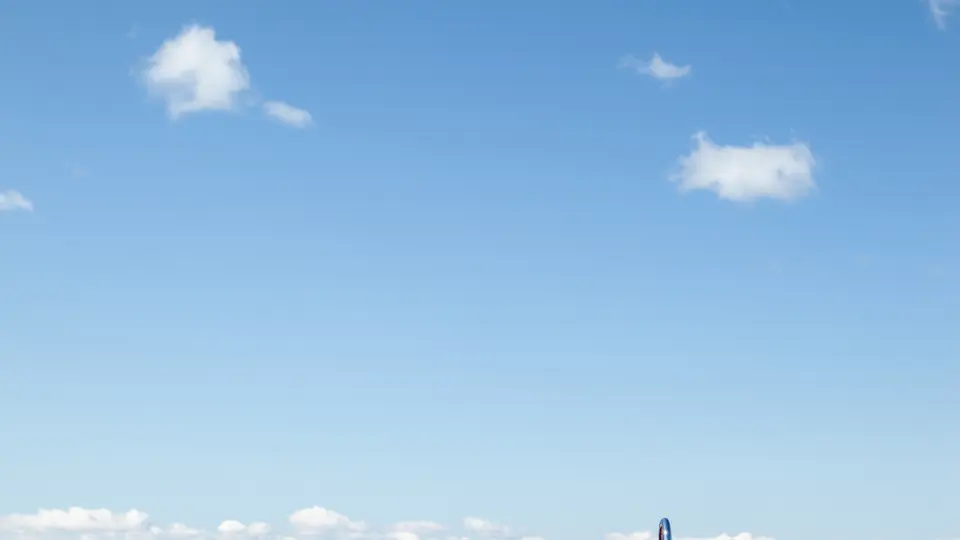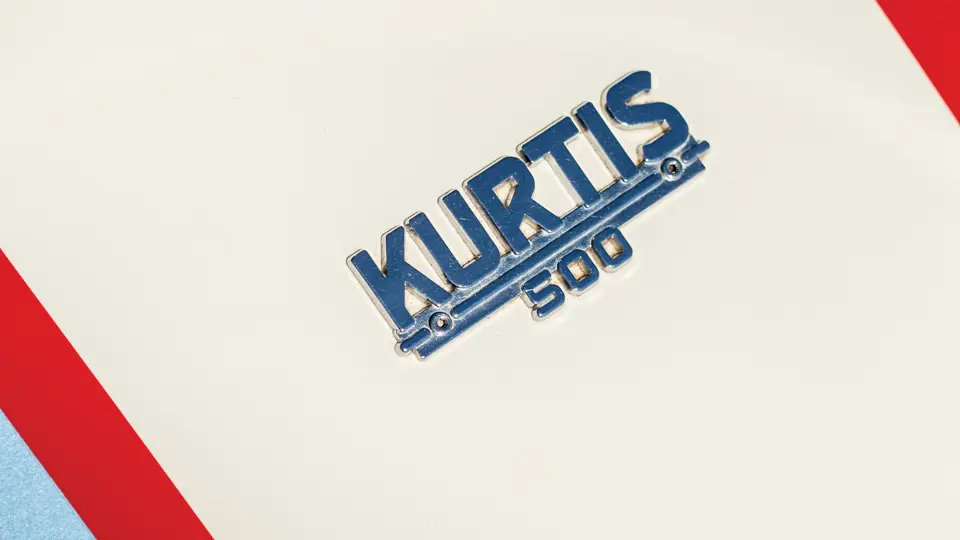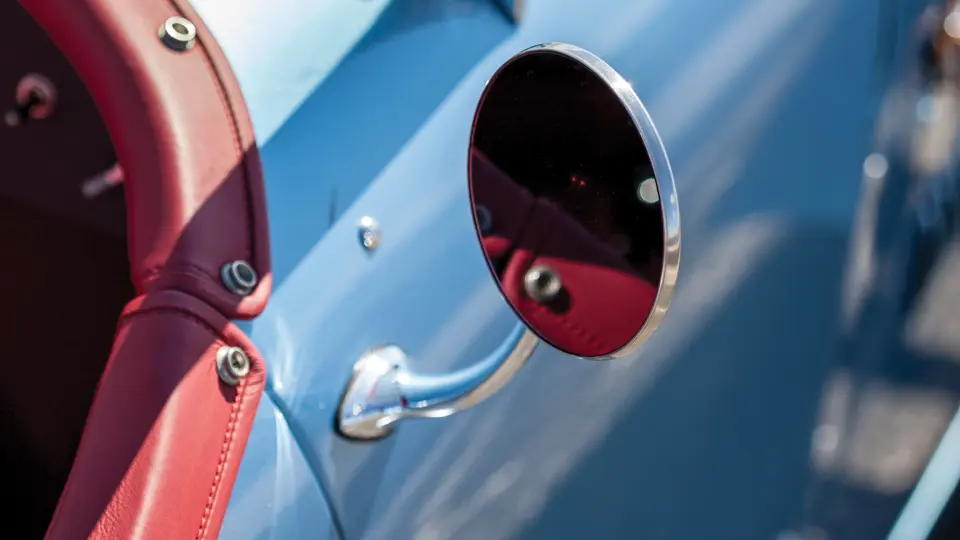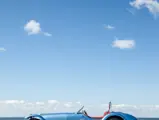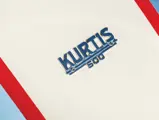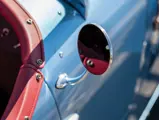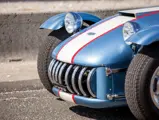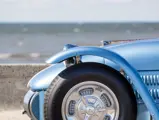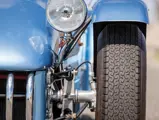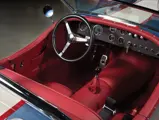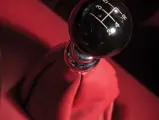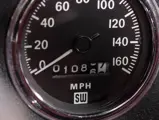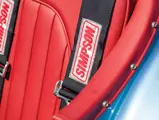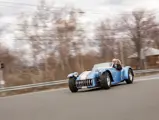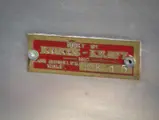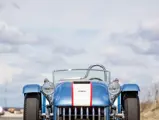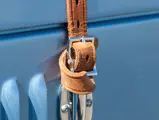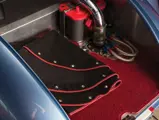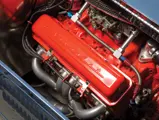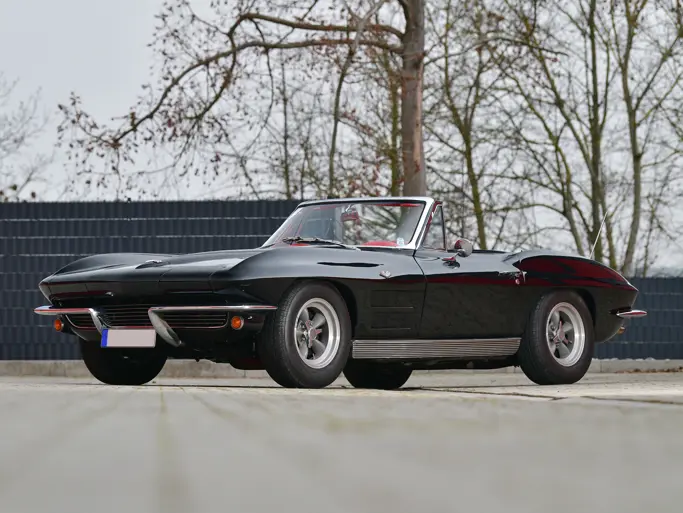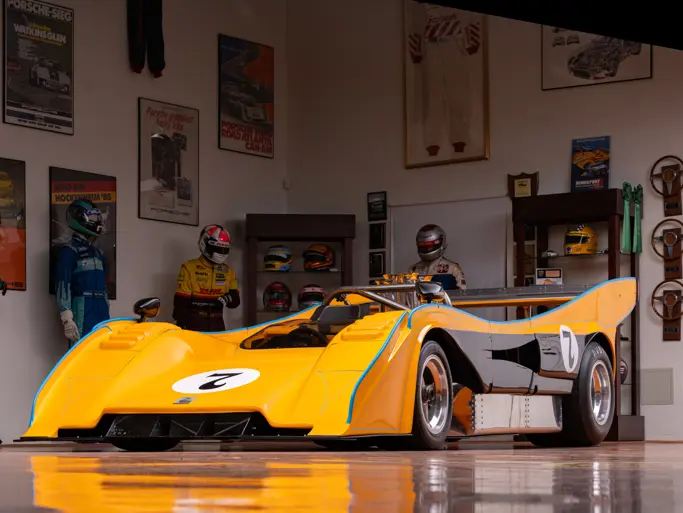205 bhp, 283 cu. in. OHV V-8 engine, five-speed manual transmission, tubular front axle and live rear axle with torsion bar suspension, and four-wheel hydraulic drum brakes. Wheelbase: 100 in.
In 1949, Frank Kurtis introduced a production road going sports car, the Kurtis Sport, which was a slab-sided two-seater with an aluminum and fiberglass body. Just 36 were built before Kurtis sold the operation to Earl “Mad Man” Muntz, who stretched the car to four-seat configuration and sold nearly 350 as Muntz Jets.
He still wanted a sports car of his own, so Kurtis next took his Indy car chassis design, as was memorably used by Bill Vukovich to win the 1953 race, and modified it as a two-seater. It was a round-tube affair with a cruciform beam in the middle and torsion bar suspension in the front and rear. It was sold in kit form, as chassis only or chassis with suspension, and called the Kurtis 500KK. Bodies were typically fiberglass from Glasspar, Woodill, and others.
A hot cycle-fendered version of the same chassis was designated Kurtis 500S. About 30 were built, bodied in fiberglass and aluminum and usually Cadillac-powered, although owners could choose Chrysler, Lincoln, or a variety of other powerplants. Light and powerful, along Allard lines, they were extremely successful in road racing.
The Kurtis 500S offered here had an extraordinarily long gestation period. It was shipped to a Darrel Johnson, of Ferndale, Michigan, in February 1956 and invoiced as a “500M chassis and suspension.” For reasons unknown, it lay unfinished until acquired by the late Warren Wetterlund, of Napa, California, in 1999. Wetterlund, a collector and driver of vintage race cars, commissioned John Ryals, of Van Nuys, California, to complete the project. The chassis, originally outfitted for a Cadillac engine, was re-configured to use a 283-cubic inch Chevy mated to a Tremec T5 five-speed gearbox. A Ford nine-inch rear axle was chosen, and the Kurtis torsion bars were mated to Koni shock absorbers. The front brakes are Alfin drums, as fitted to most Kurtis cars in their era.
The engine was assembled by LJ’s Speed Shop in Napa and had 10:1 compression, wet-sump lubrication, stainless steel headers and exhaust, and a Holley 650 four-barrel carb with Mallory ignition. Street rod builder Roy Brizio prepped and painted the body, which has a fiberglass rear tub with aluminum doors, cowl, and nose. White-on-black Stewart Warner instruments grace the simple dashboard. The jaunty windshield is a custom creation, made by modifying a screen intended for a 1932 Ford “Deuce” hot rod.
The current owner purchased the Kurtis in 2005. A new red leather interior was installed at this time, and the white racing stripe was added. The front brakes were also converted to drums. As offered, the car has Dunlop Racing blackwall tires on Halibrand alloy knock-off wheels. The cockpit is fitted with a chrome roll bar and Simpson competition-style seat belts, and it comes with a canvas tonneau cover. In addition to the touring windshield presently fitted, it also includes a Plexiglas competition-style screen for use in motor sports. The car has recently been tuned and detailed by Kent Bain’s Vintage Racing Services in Stratford, Connecticut.
Featured in the December 2004 issue of Super Rod magazine, this Kurtis 500S is a superb example of the seldom-seen Kurtis sports cars. Ready to race or tour, or for simple pleasure, it represents a rare find in today’s marketplace.
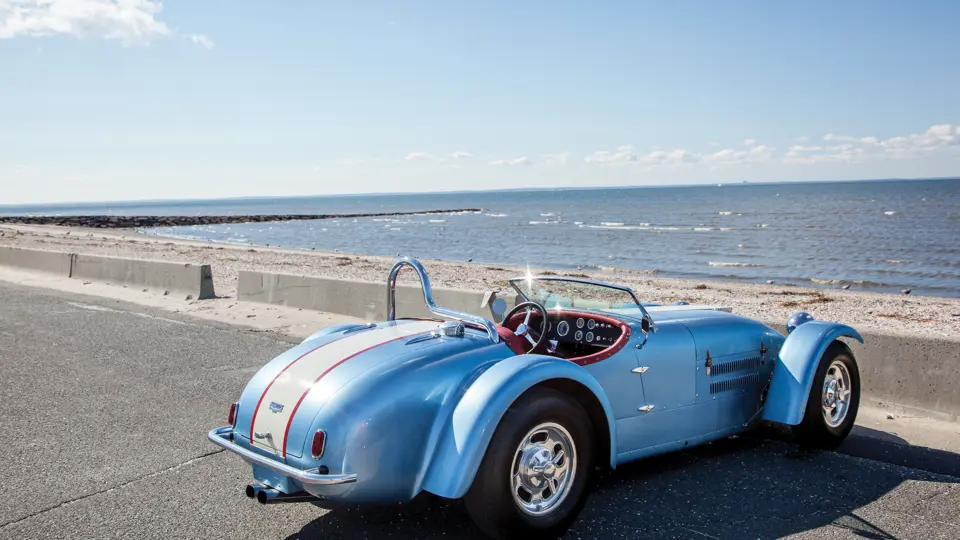

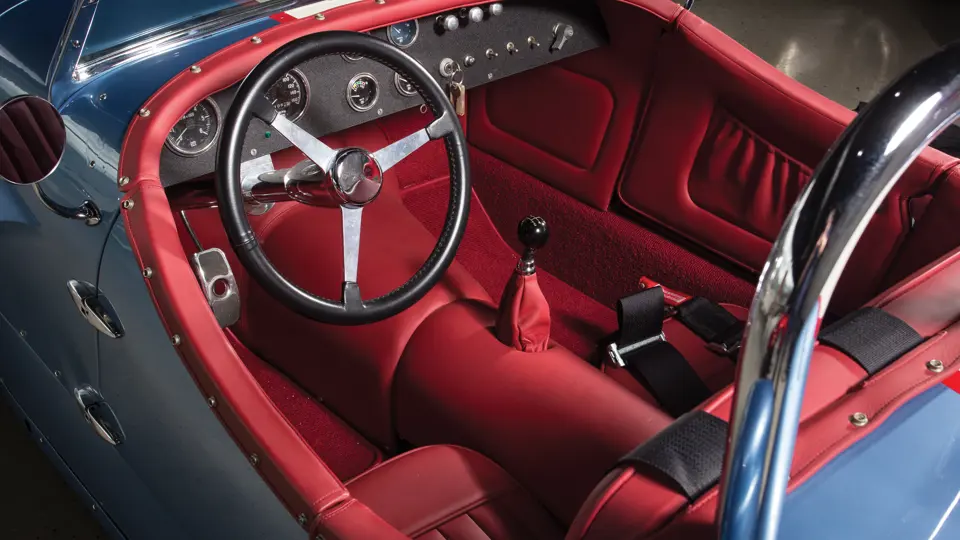

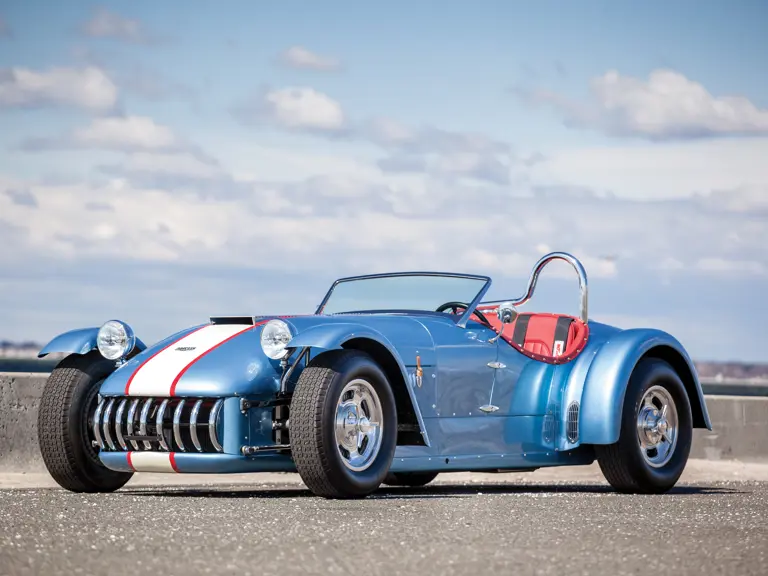
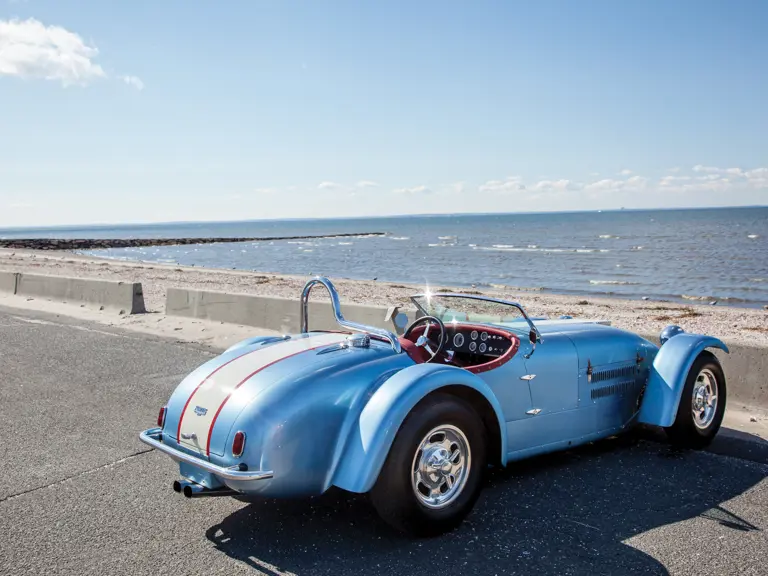

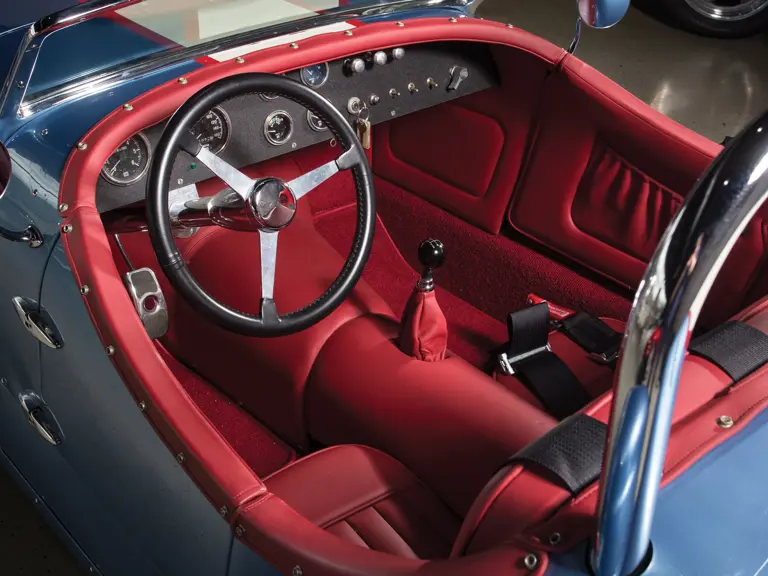
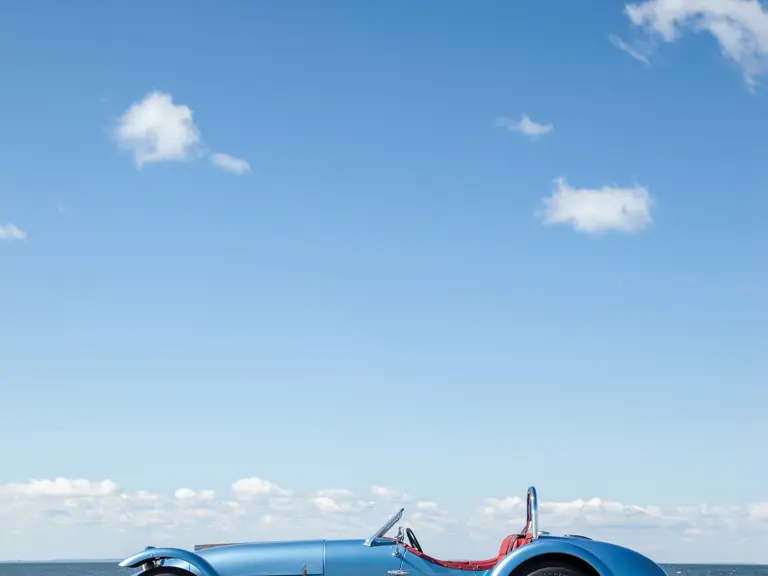
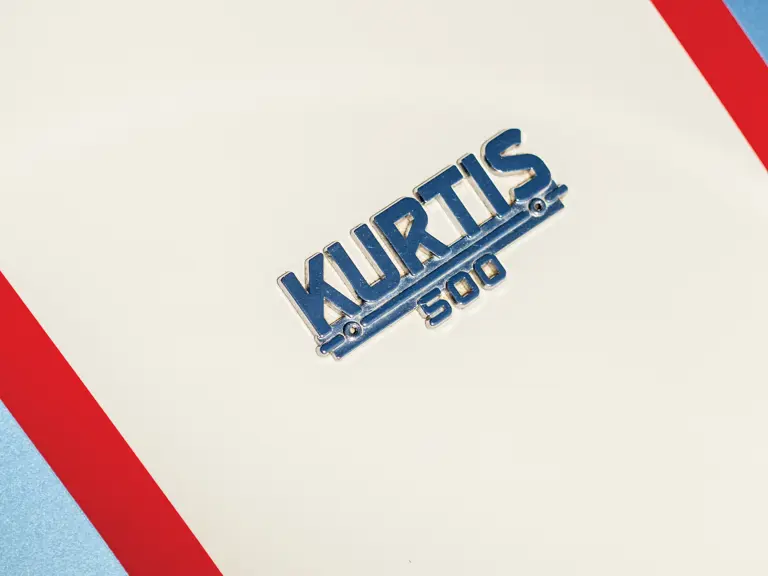
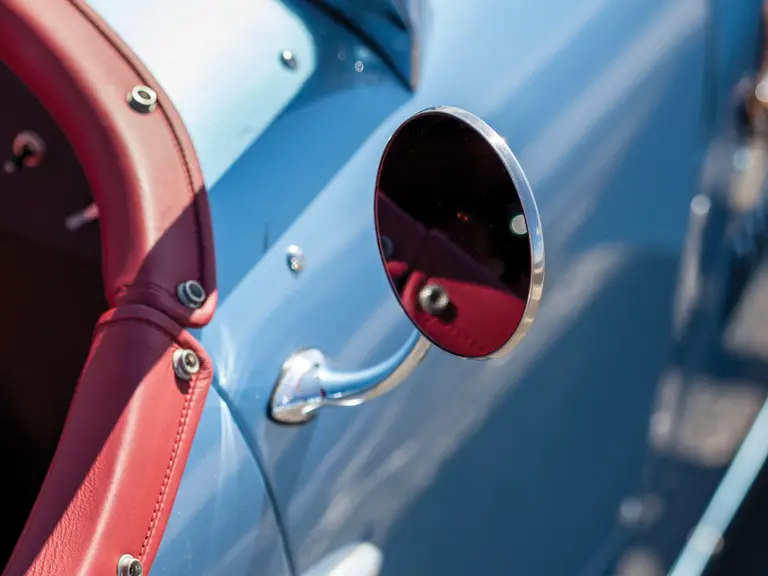
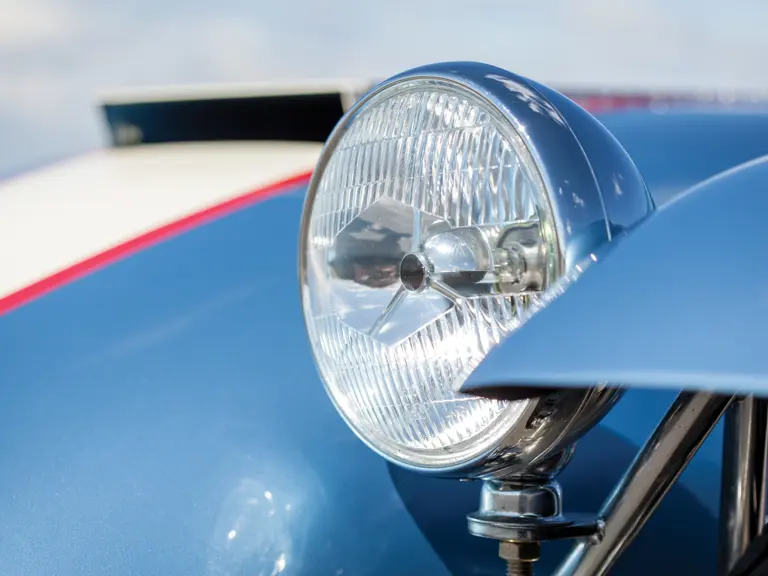
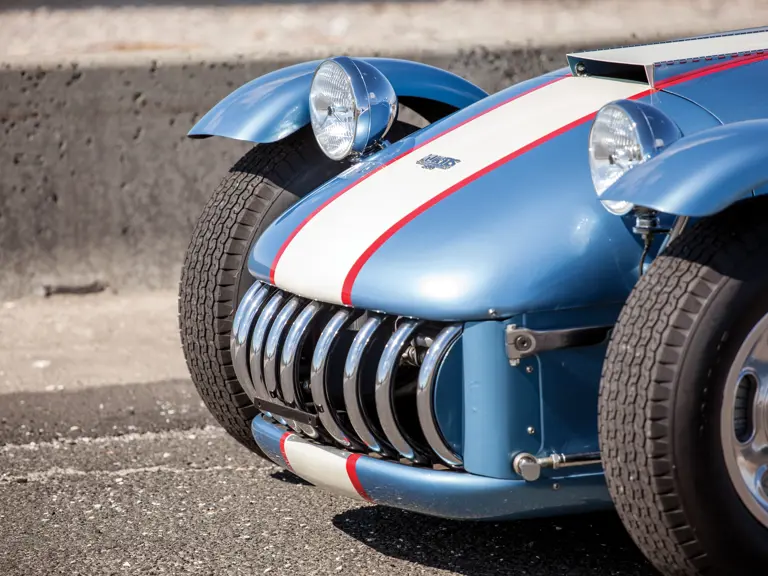
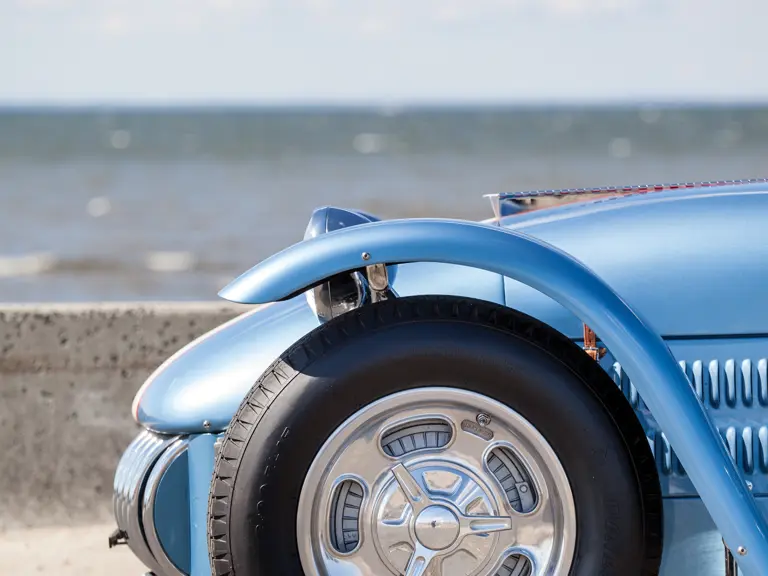

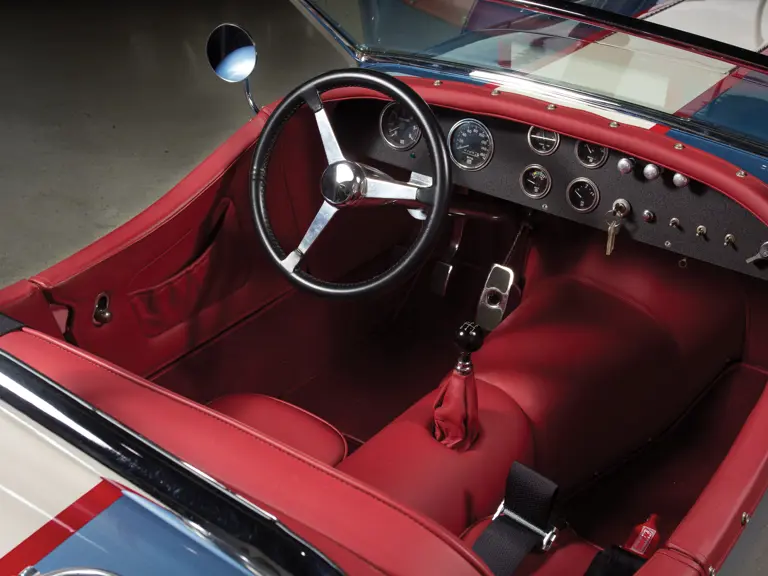

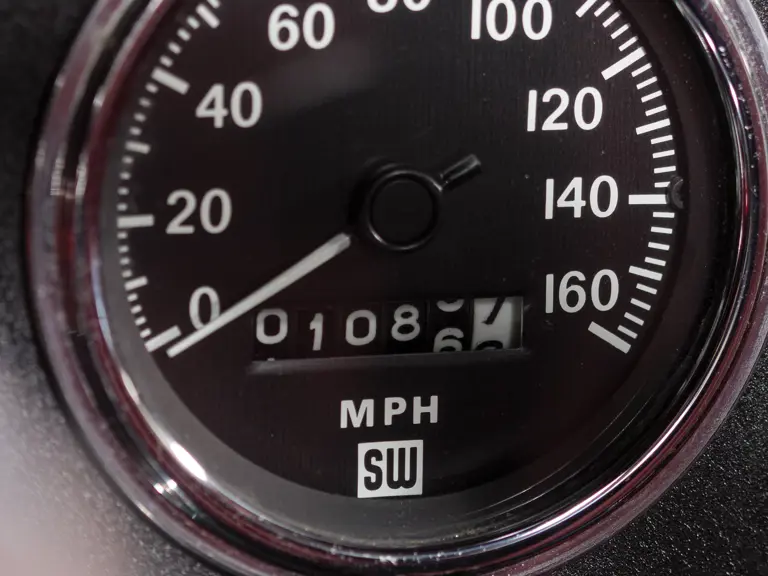
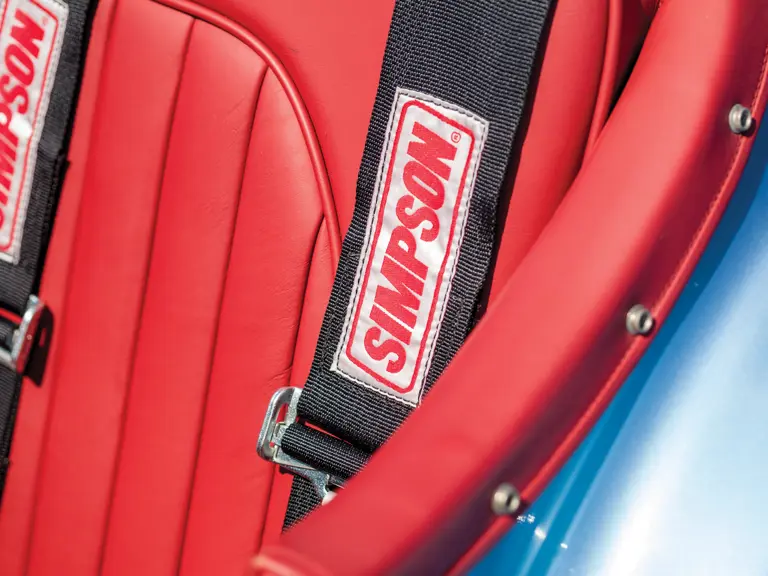
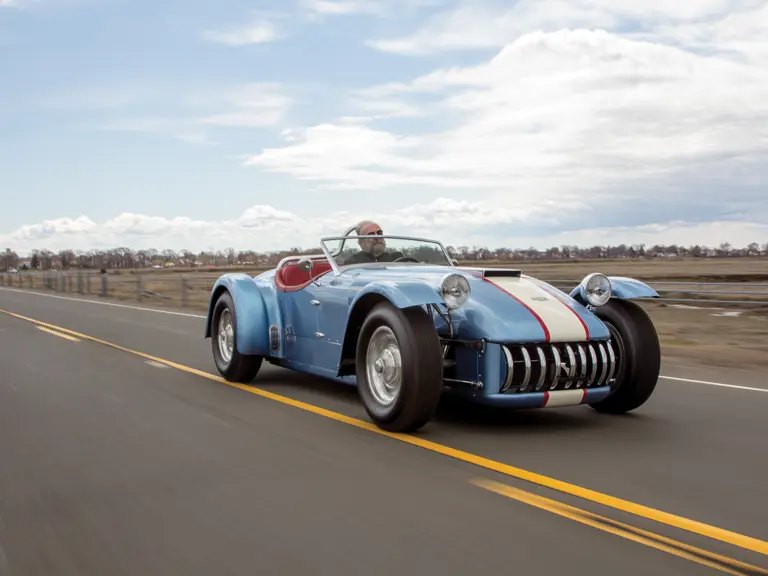
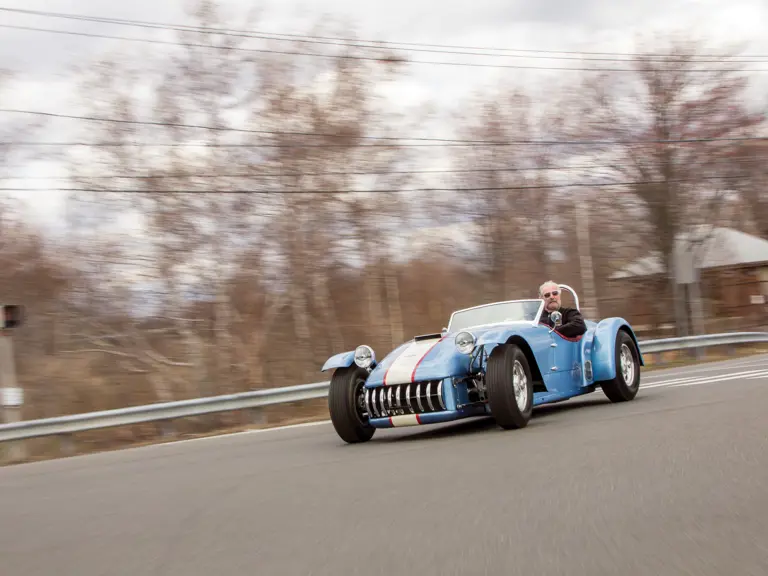

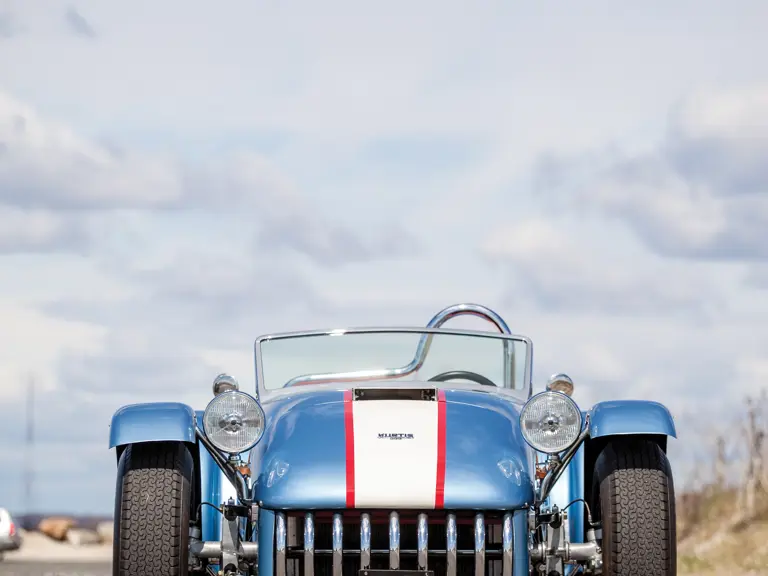


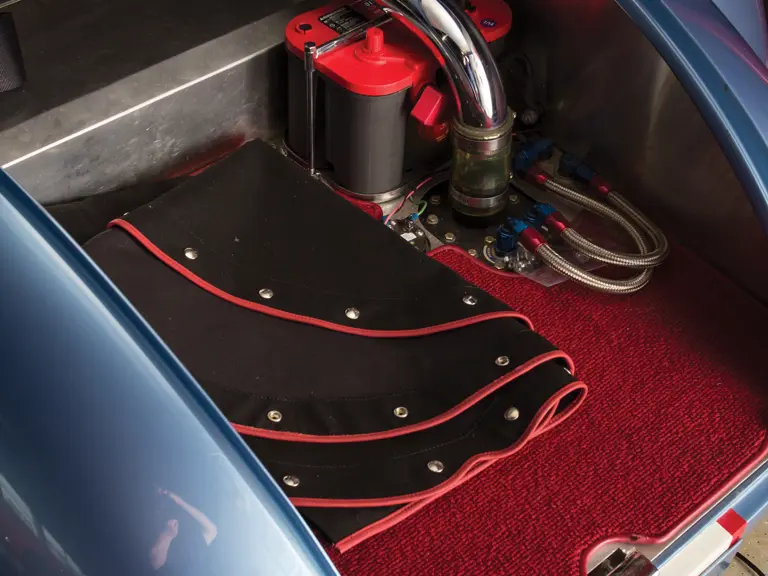
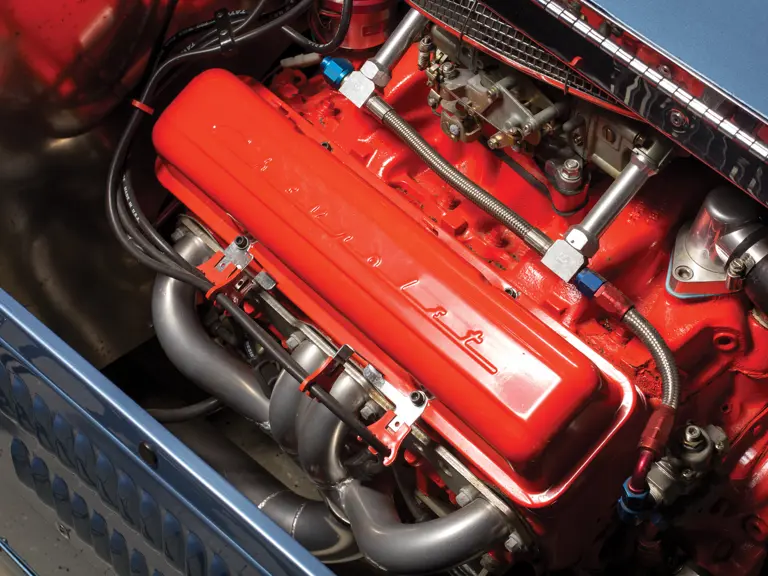
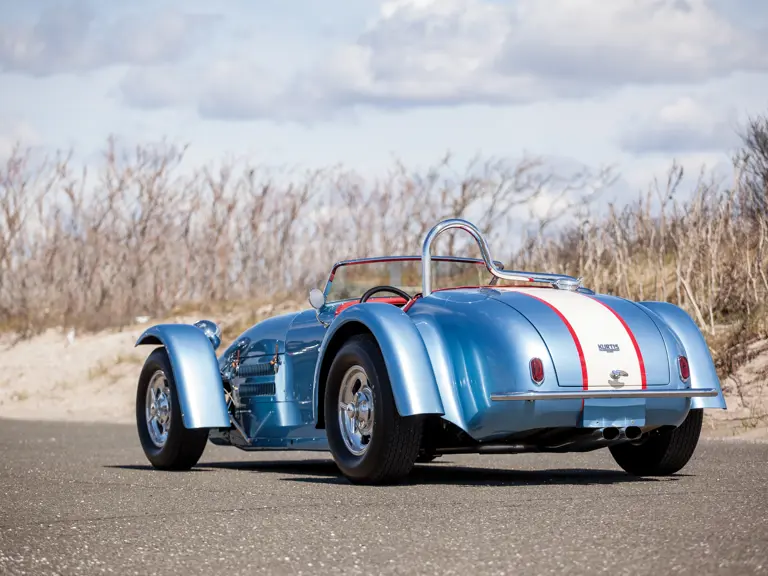
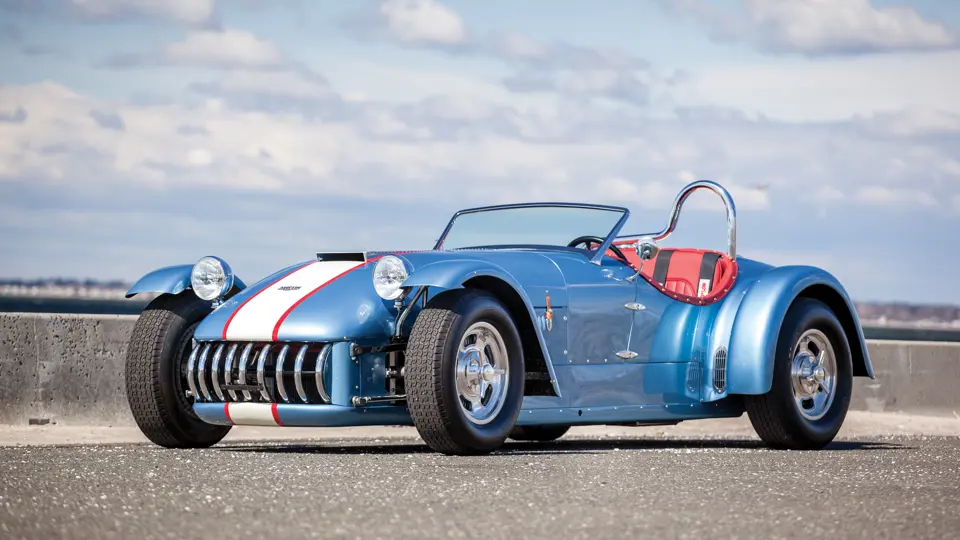
 | Monterey, California
| Monterey, California
